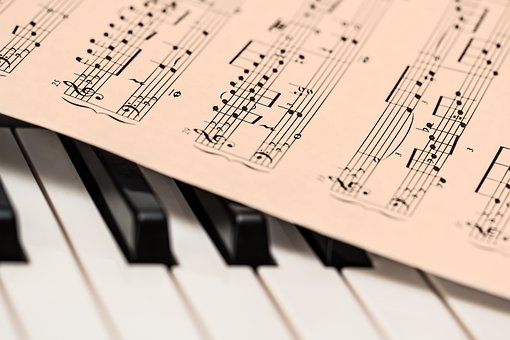 While researching learning styles, I came across the idea that it is possible to connect a visual representation of a fraction to the value of various notes. The teacher encouraged clapping, drumming, and chanting to provide another avenue of instruction. The third graders who went through this experience improved their understanding of basic fractions significantly.
While researching learning styles, I came across the idea that it is possible to connect a visual representation of a fraction to the value of various notes. The teacher encouraged clapping, drumming, and chanting to provide another avenue of instruction. The third graders who went through this experience improved their understanding of basic fractions significantly.I wish I'd known about this because it would have added a layer to the fraction unit I just taught in Pre-Algebra. I've found quite a few resources I'm sharing with you so if you want to extend your tools, you can include these.
First is the Math Science Music group who have quite a few resources for the math classroom. Remember in the first paragraph, I talked about connecting time fractions with music? This is the group who created the program used. They have Academic Music which is the program described earlier. They also have Groove Pizza which uses angles, shapes and groove, or Indian Rhythms using rhythm, patterns, and music. Check out OIID with music, composing, and math.
Each unit comes complete with everything needed for the teacher to plan a lesson or set of lessons. They've included a list of resources, information on the grade level, concepts and processes. I am impressed with their offerings. I have a few students who are into music and this would appeal to them.
Teacher Vision has a wonderful list of resources on their Mathematics in Music web page. There is one of the Fibonacci sequence and music while the next link down focuses on patterns in both music and math. In addition, there are links on permutations and improvisation in jazz, the use of fractions in music, connecting music and math via Mozart, or taping out different rhythms.
This 176 page PDF on Mathematics and Music written by David Wright in 2009 contains a wide variety of connections between the two topics. It was originally designed as a textbook for college freshmen and as such each chapter focuses on a different topic. The first chapter lays the foundation looking at the basic concepts in math and in music so as a student progresses through the book, they have a foundation for the topic.
The second chapter focuses on note values and time signatures while the third chapter looks at chords and chord identification. By the fourth chapter, the author discusses the mathematical ratios of intervals. Each chapter covers a higher level of math from logarithms and musical intervals, integers as intervals, and periodic functions. Next semester, I plan to have my Algebra II class explore logs and natural logs. This material will be perfect to use in that class.
Finally for today's list, I include a set of lesson plans from Thirteen.org on the Math in Music. It comes with a couple of different videos including one where two people discuss how math is used to produce hip-hop music. It comes with everything needed to conduct a cool lesson or two.
Let me know what you think. I think this is another cool way to make math easier for the student who hates math or thinks they are not good at it to relate to.
No comments:
Post a Comment